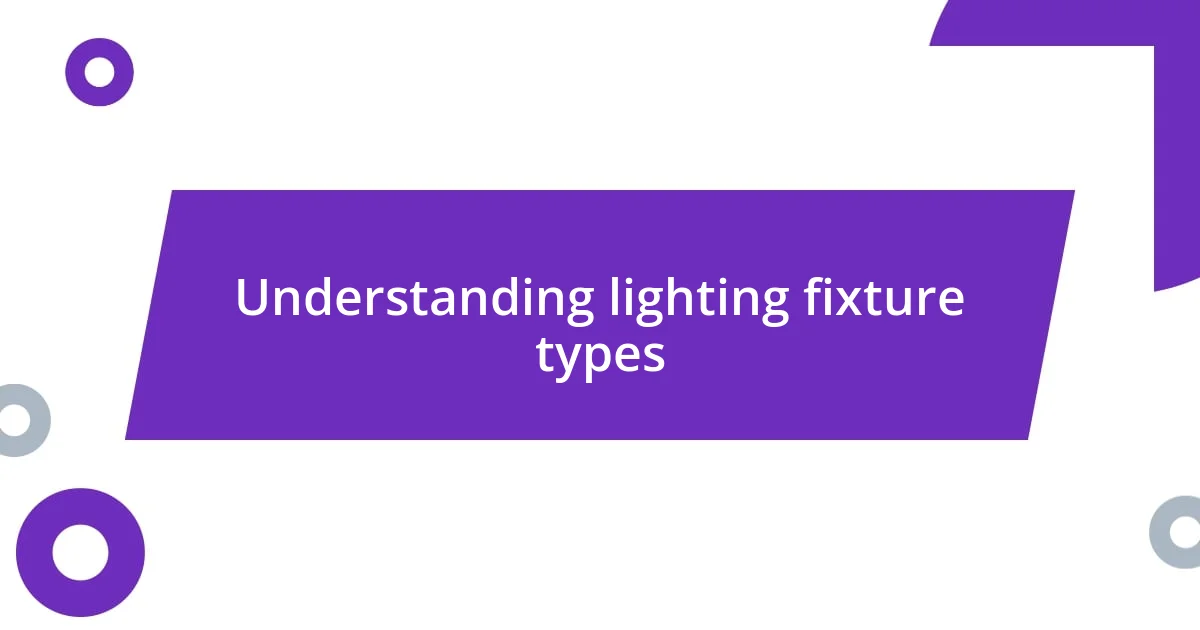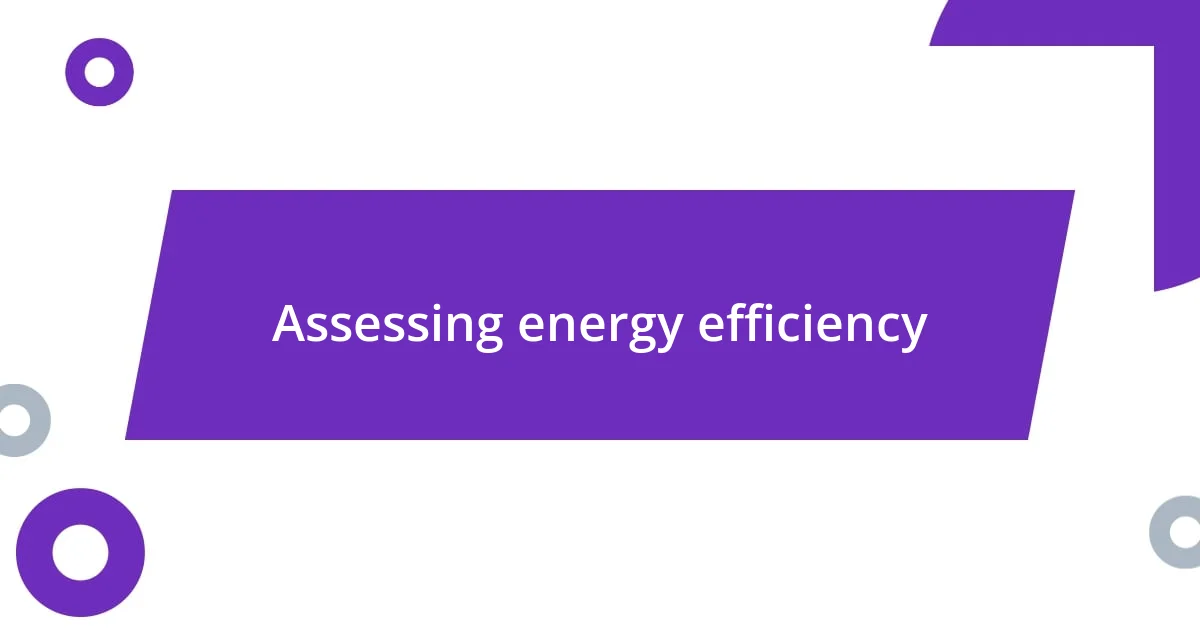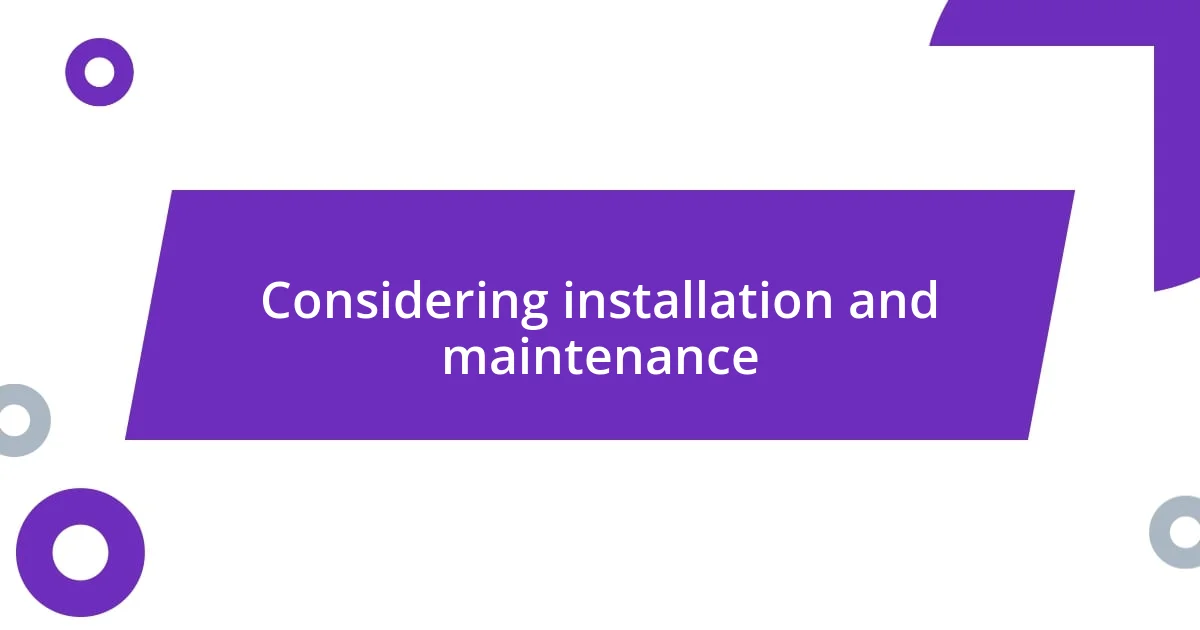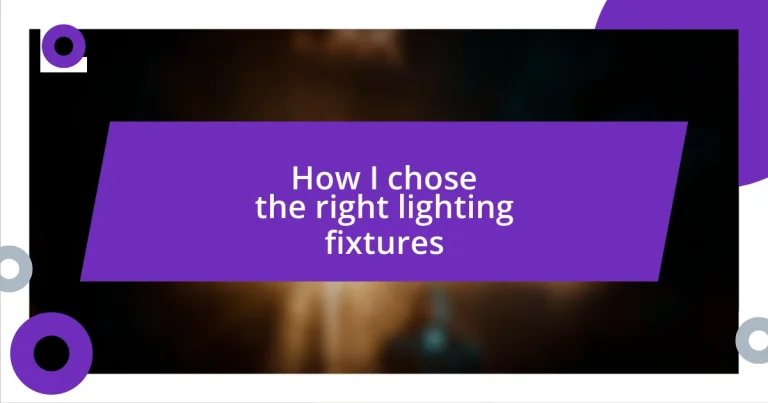Key takeaways:
- Understanding the variety of lighting fixtures (chandeliers, pendants, sconces, etc.) is essential for creating the right mood and ambiance in both indoor and outdoor spaces.
- Measuring your space and evaluating the purpose of the room ensures that lighting fixtures complement the environment without overwhelming it.
- Considering energy efficiency and maintenance, as well as being mindful of aesthetics, helps make informed decisions that enhance both functionality and visual appeal.

Understanding lighting fixture types
When I first started exploring lighting fixtures, I was surprised by the sheer variety available. There are options like chandeliers, pendants, sconces, and track lighting, each serving a unique purpose and setting a different mood. Have you ever walked into a room only to be immediately captivated by its lighting? That’s the magic of choosing the right fixture!
I remember one particular weekend when I spent hours in a lighting store, overwhelmed yet fascinated by the sheer options. I discovered that floor lamps can create cozy reading nooks, while ceiling-mounted fixtures illuminate entire spaces. It made me realize just how essential it is to understand the purpose behind each type of fixture—light isn’t just functional; it shapes our emotions and experiences.
As I delved deeper, I started to appreciate how outdoor lighting could transform a garden into an enchanting evening retreat. From ambient fairy lights to task lighting for barbecues, each type can enhance our connection to outdoor spaces. Have you thought about how lighting can change both indoor and outdoor environments? For me, the right lighting fixture can evoke cherished memories and create new ones.

Knowing your space requirements
Understanding the space requirements is crucial when choosing lighting fixtures. I remember my first attempt at lighting my living room; I thought I could simply throw in a beautiful chandelier without considering the room’s dimensions. The result? A stunning fixture that felt completely out of place because it was overwhelming the space instead of complementing it. Ensuring your lighting fixture matches your room’s size can make a world of difference—not just visually but emotionally, as it creates a harmonious environment.
To help you navigate the space requirements, consider the following points:
- Measure Your Space: Assess the height and width of your room. This will guide you in choosing fixtures that fit comfortably without overwhelming the area.
- Evaluate the Purpose: Determine how you intend to use the space. Is it for relaxation, work, or entertaining? The purpose will influence your choice.
- Consider Fixture Scale: Opt for larger fixtures in expansive spaces and smaller options in cozier rooms to maintain balance.
- Take Lighting Levels into Account: Think about natural light sources during the day and how they affect your lighting needs at night.
I now measure everything before finalizing my choices, and understanding my space has truly been a game changer in creating inviting atmospheres.

Evaluating aesthetics and style
Evaluating aesthetics and style involves more than just picking what looks good; it’s about finding the right fit for your personal taste and the mood you want to create. For me, selecting a lighting fixture is like curating art for a gallery wall. Each piece should resonate with the other elements in the room. I remember choosing a sleek, modern pendant for my kitchen. It was all about achieving a contemporary look, and the moment it was installed, the entire vibe of the space transformed. Have you ever experienced that shift in energy just from a single change?
I often find that my style preferences evolve over time; what I loved a few years ago might no longer spark joy. For instance, my recent obsession has been with vintage-inspired fixtures. I paired an antique brass fixture with a minimalist setting, creating a beautiful contrast that draws the eye. It’s amazing how the right lighting fixture can reflect your personality, adding layers of warmth and storytelling to your space. Integrating various aesthetics, like modern and vintage, makes it feel not only stylish but personal.
When evaluating aesthetics, consider the overall theme of your home. Is it rustic, industrial, or something in between? Choosing fixtures that complement your space can enhance the visual coherence of your interior design. I remember visiting a friend’s home, where she harmonized industrial bulbs with farmhouse decor. It was unexpected yet so cohesive. This taught me the importance of synergy in design; lighting can be a conversation starter in itself.
| Aspect | Considerations |
|---|---|
| Theme | Does the fixture fit with the existing style of your home? |
| Contrast | How does it interact with other design elements? |
| Personal Preference | Does it resonate with your individual style? |

Assessing energy efficiency
Assessing energy efficiency can seem daunting, but it’s an essential consideration when selecting lighting fixtures. I remember when I upgraded to LED bulbs in my home; not only did my energy bills drop, but the quality of light improved significantly too. The savings came as a pleasant surprise, proving that energy-efficient lighting is much more than a trend—it’s a smart choice for your wallet and the environment.
It’s crucial to look for ENERGY STAR certification or similar labels on fixtures and bulbs. In my experience, this certification signifies that the product meets strict energy efficiency guidelines, which means you’re investing in something that helps reduce your carbon footprint. Have you ever thought about how small changes can lead to significant impacts? For instance, I replaced traditional incandescent bulbs with compact fluorescents in my reading nook, and instantly, I noticed not just the monetary savings but a brighter, more inviting atmosphere.
Don’t forget to consider the light output measured in lumens and the energy use measured in watts. A higher lumen output for fewer watts is what you want. I remember feeling overwhelmed by these numbers at first, but once I understood that more lumens mean brighter light and fewer watts mean lower energy consumption, choosing became easier. It’s empowering to make informed decisions, turning what can feel like a paradox of choice into an opportunity for brighter, more efficient living spaces.

Considering installation and maintenance
When I considered the installation of my lighting fixtures, I quickly realized how significant this aspect was. The layout and design of your home play a key role in how easily a fixture can be installed. I remember the challenge I faced with ceiling-mounted lights in my living room; the ceiling height made it tricky to reach, and I ended up needing professional help. Have you ever underestimated how important installation ease can be? It’s a lesson learned—the right fixture is less valuable if it’s a hassle to put up.
Maintenance is another factor that shouldn’t be overlooked. I once chose beautiful glass fixtures thinking they’d add elegance to my dining space. However, I soon discovered that they collected dust and fingerprints more quickly than I expected. Suddenly, I was dedicating my weekends to polishing instead of enjoying the ambiance I had envisioned. It’s easy to get caught up in aesthetics, but practical upkeep is essential to keep your space looking fresh and inviting. Have you considered how much time you want to spend maintaining your choices?
Another point worth mentioning is the durability of the fixtures. I invested in some trendy, statement fixtures that I thought were stylish but ended up having short lifespans. I felt a twinge of regret each time a bulb blew, and I realized the importance of selecting fixtures that can withstand the test of time. Afterward, I prioritized quality over trendiness. Are you ready to make choices that last longer than a season? Choosing durable materials means you can enjoy your lighting without the constant worry of replacement.

Making the purchase decision
When it came time to actually make the purchase, I found myself torn between budget and quality. I remember standing in the lighting aisle, feeling the pull of a sleek, modern fixture that was just outside my price range. It made me realize a valuable lesson: sometimes, it’s worth stretching your budget a bit for something that will truly elevate your space and last longer. Have you experienced that conflict between what your heart wants and what your wallet says?
I also learned to ask myself critical questions before finalizing my choice. For example, I pondered how often I’d be using a specific area and what kind of light it required. This became clear when I chose a stunning chandelier for my dining room but found it lacked the warm ambiance I needed for family dinners. I had to swap it out for a softer, more inviting light—what a journey of trial and error that was! In the end, understanding the purpose of each lighting fixture made my decision much clearer.
Lastly, I recommend shopping around before committing. I recall the temptation of an online deal that seemed too good to pass up, only to find it looked completely different in my home. There’s something special about seeing a fixture in person; the texture, the color, and the scale all change how it feels in a space. Have you ever bought something online only to experience buyer’s remorse? I’ve been there. Taking the time to visit stores helped me make more confident choices that truly suited my home.

Tips for successful lighting setup
When setting up lighting, I’ve found that layering your light sources can dramatically enhance the room’s atmosphere. I once had an ordinary room that transformed into a cozy nook just by adding a few strategically placed table lamps alongside my overhead fixtures. Have you ever imagined how different a space can feel with just the right mix of lighting? It’s almost magical!
Another tip that might resonate with you is to consider the color temperature of the bulbs. I remember my disappointment when I installed bright white bulbs in my bedroom, only to realize they felt more like a doctor’s office rather than a relaxing retreat. Switching to warm white bulbs turned it into a space where I could unwind—changing the color temperature truly shifted the vibe. What kind of mood do you want to create in your home?
Finally, think about dimmers. I installed them on my living room lights, and it was a game changer! Now, I can adjust the brightness based on the time of day or the occasion. On movie nights, I dim the lights to set the perfect mood. Have you considered how much control over your environment you can gain with just a simple adjustment? It’s one of those little details that can make a big impact on how you experience your space.














